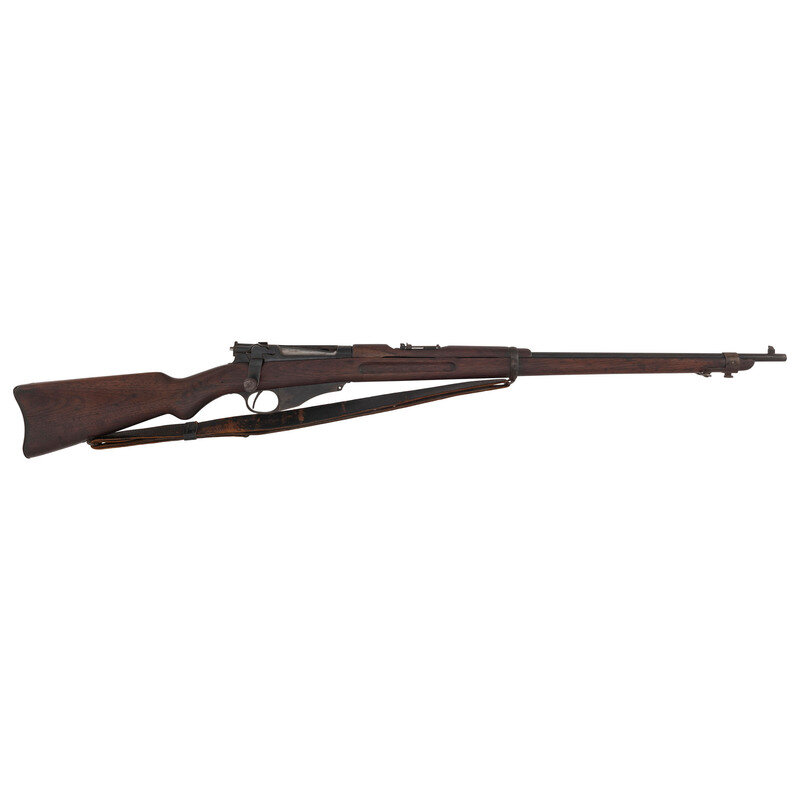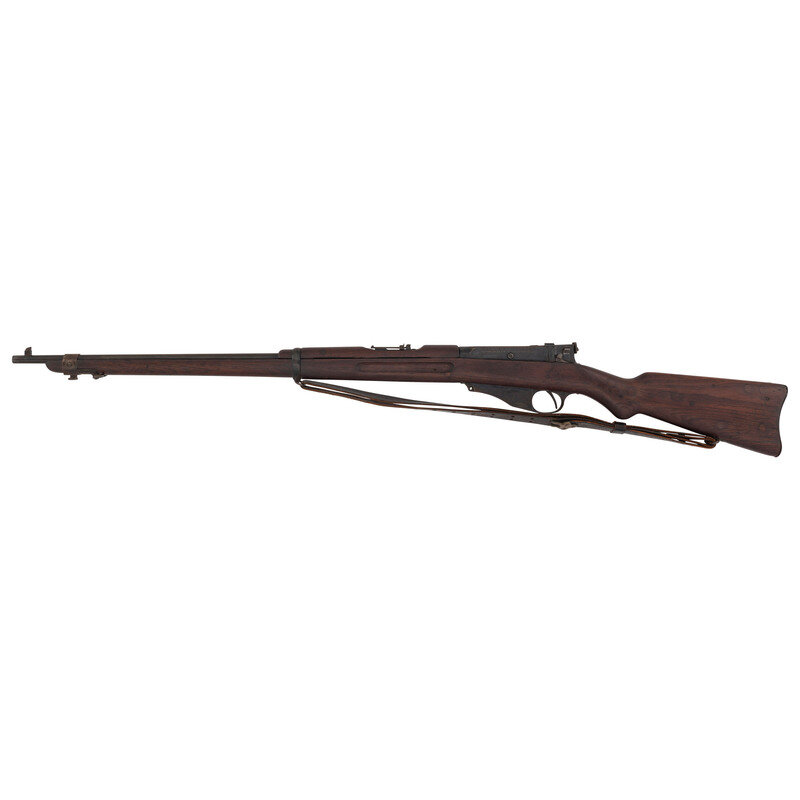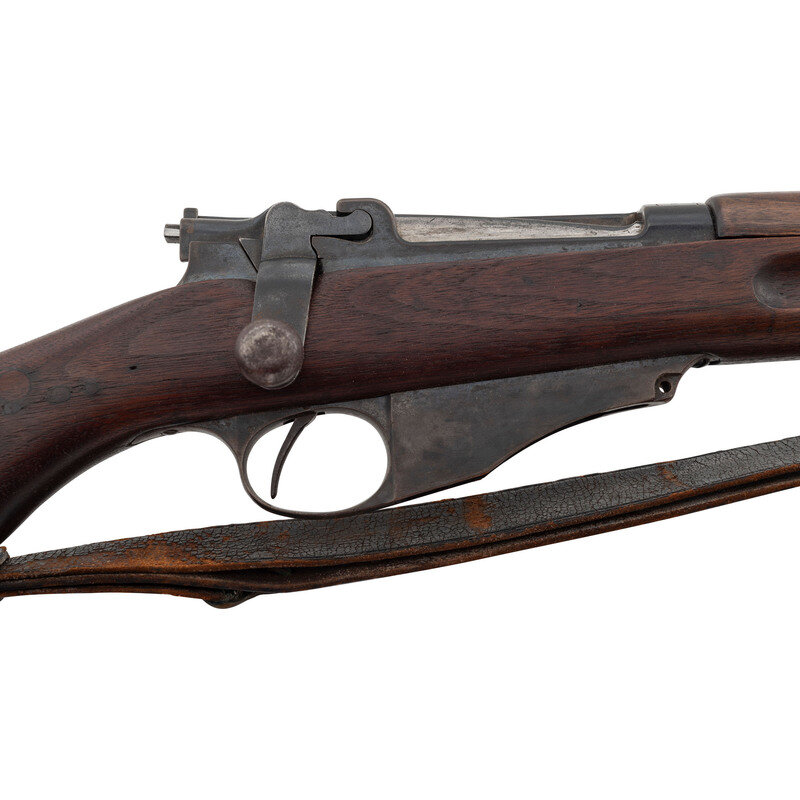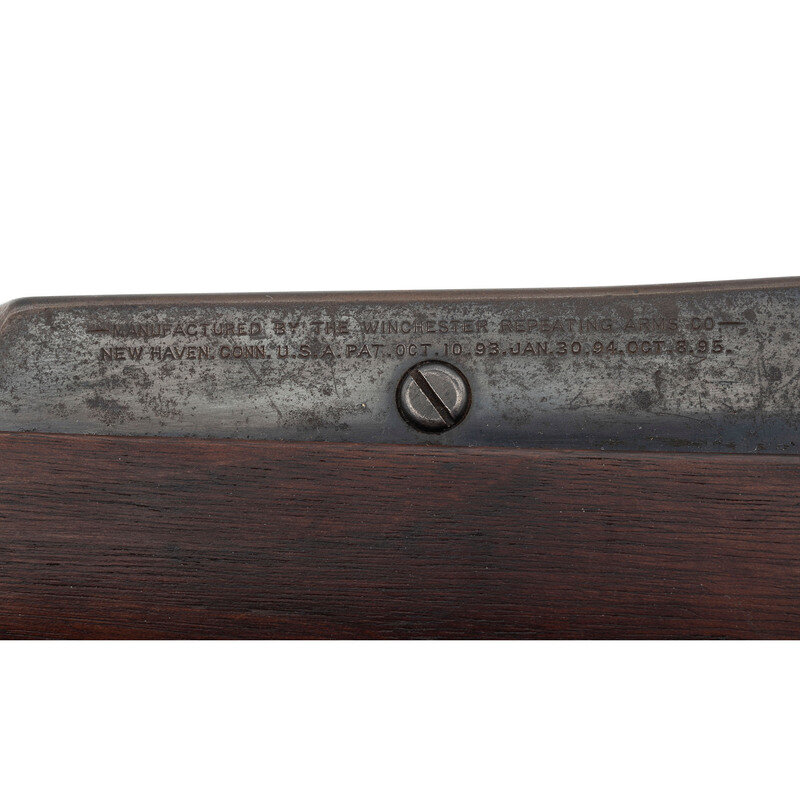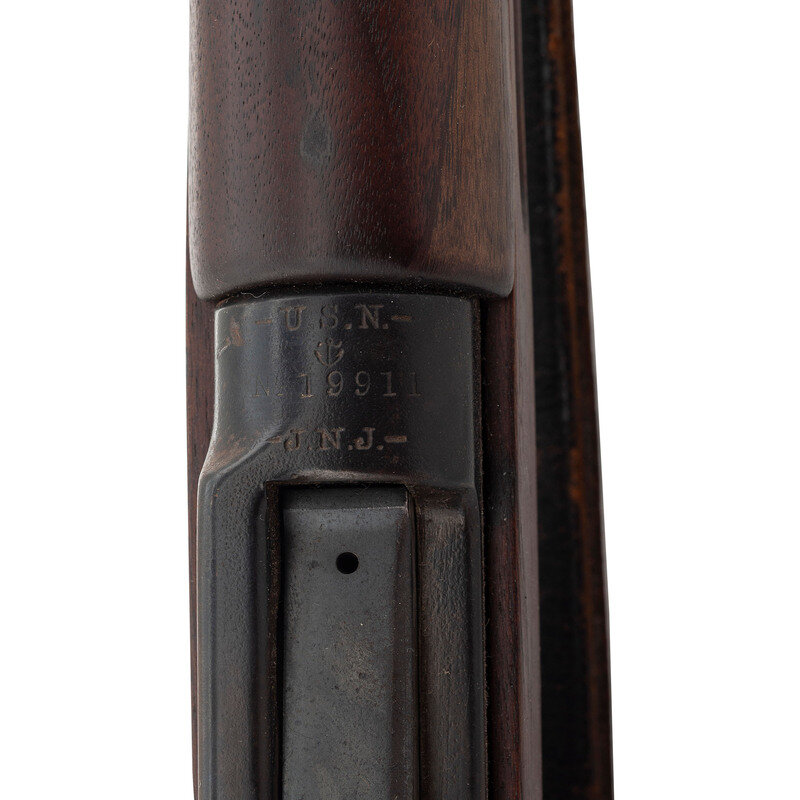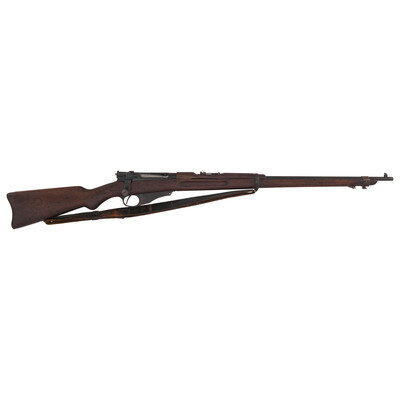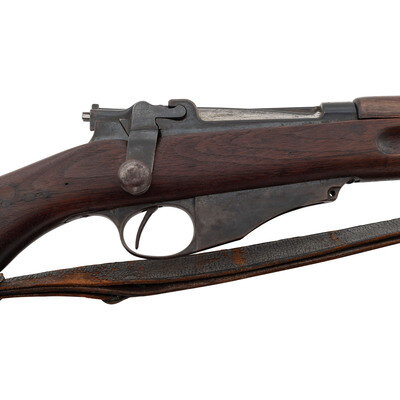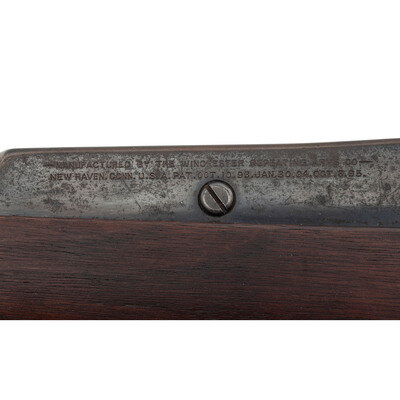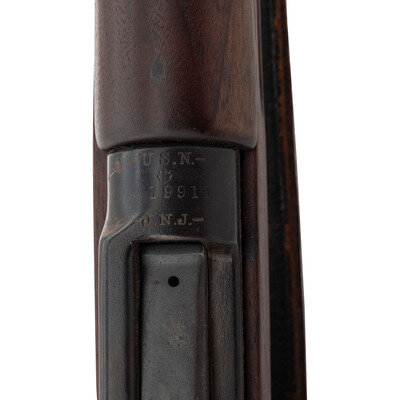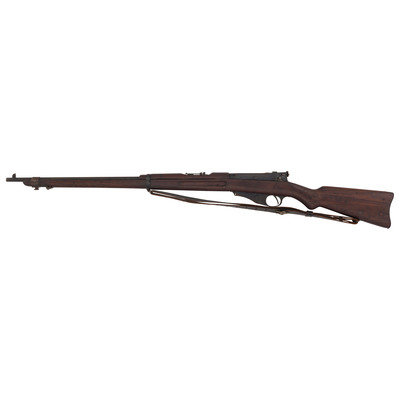6x60mmSR. 28" barrel length. SN: 19911. Blued metal refinish with polished action surfaces and a full length walnut semi pistol grip stock with half length upper handguard. Straight pull tilting lock action rifle charged with an en bloc clip designed by James Paris Lee. The receiver lacks the later gas vent drilled into the top of the barrel shank, which is marked -U.S.N.-/{Anchor} followed by the serial number. The left receiver displays the manufacturer marking reading -MANUFACTURED BY THE WINCHESTER REPEATING ARMS CO.-/NEW HAVEN. CONN. U.S.A. PAT. OCT. 10. 93. JAN. 30. 94. OCT. 8. 95. The sights consist of an adjustable rear ladder graduated out to 2,000 yards and a pinned front blade. The stock has a void in the buttstock aligning with the trapdoor in the butt for storing cleaning tools. Further markings include The {Star V} and P markings to the left bolt by the locking shoulder, a similar J and star mark on the interior face of the cocking handle, and to the left triggerguard. There is a further star on the firing pin, and a Z stamp to the right triggerguard. The barrel band is struck with a U mark. The stock shows multiple wood bolt repairs to the wrist and buttstock, and the rifle mounts a leather sling. Adopted in 1895, the Lee rifle provided the United States Navy a modern smokeless powder rifle utilizing a unique straight-pull action paired with an en bloc clip charged magazine. Approximately 15,000 examples were produced for government service but the unique cartridge ultimately doomed the rifle. In 1898, a unified board representing all branches of the US Armed forces agreed that a single cartridge should be adopted for American small arms. The .30-40 Krag round was cheaper to manufacture, and the Army had already adopted enough examples to warrant standardizing around that cartridge. Winchester offered the rifle on the civilian market, but sales remained slow thanks to the large volumes of cheap repeating arms that could be had through dealers like Bannerman and others. Despite its short service, the Lee rifle still served with the United States Marine Corps and Navy during the Spanish American War, the Philippine American War, and the Boxer Rebellion.
